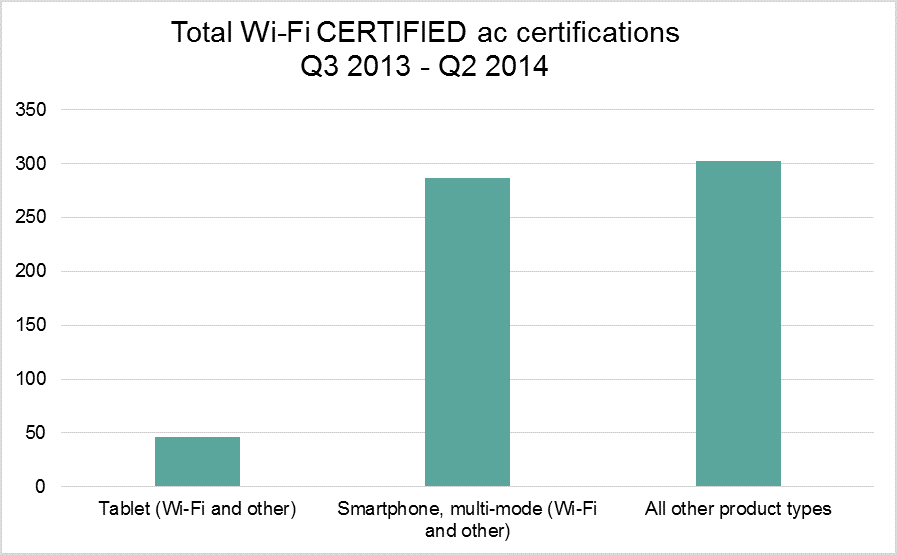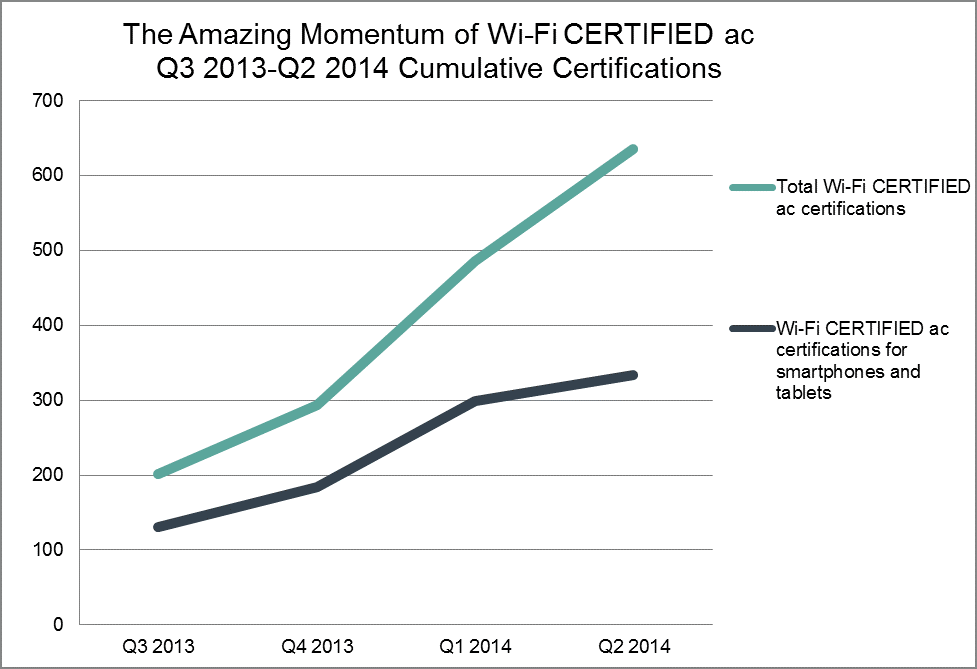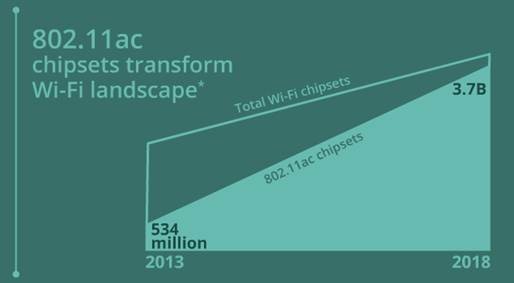At the launch of the Wi-Fi CERTIFIED™ ac program, we looked at the mobile revolution, its role in changing Wi-Fi® adoption, and the future. Now about a year later, with some compelling developments in Wi-Fi hitting the news, we thought it time to re-examine how far we’ve come, and where we think we are going in the world of Wi-Fi technology.
In last year’s blog, we emphasized how mobile devices have historically been the last to receive new networking technology while predicting that smartphones would begin leading the charge with the launch of the Wi-Fi CERTIFIED ac certification program. The chart below demonstrates that shift by showing the strong number of smartphones among the first to adopt and certify 802.11ac technology relative to other device types.
Source: Wi-Fi Alliance
A year later, those predictions ring true. The mobile revolution has changed the adoption of technology, and smartphones were the major product category of new 802.11ac certifications (see graph below). Smartphone usage is also on the rise, and penetration continues to deepen.
Source: Wi-Fi Alliance
More than 600 products have obtained Wi-Fi CERTIFIED ac certification, demonstrating impressive adoption of 802.11ac in the market. Also, rapid adoption is taking the advantages of the 5 GHz band to into the mainstream market. Although use of the 5 GHz band has been available in Wi-Fi products for a long time, 802.11ac is popularizing the use of 5 GHz as manufacturers and consumers alike are coming to realize the very high throughput benefits offered by the Wi-Fi CERTIFIED ac featureset. We are still relatively early in the adoption cycle of 802.11ac technology and ABI Research, is forecasting the technology will change the Wi-Fi landscape:
Source: ABI Research, 2013
In addition to more widespread adoption into Wi-Fi product designs, the momentum towards 802.11ac is likely to receive a significant boost from the addition of powerful features such as multi-user multiple input multiple output (MU-MIMO) technology.
The key benefit of MU-MIMO is that a router is able to serve multiple devices simultaneously resulting in a much more efficient network between multiple devices. MU-MIMO is a key step into driving further efficiency into the operation of Wi-Fi networks in dense environments. This is one of the innovation vectors for Wi-Fi-type networking, and is bound to drive industry success in future generations. Another innovation vector is optimized power consumption, and longer range 802.11 networking, which will drive Wi-Fi type networking into key emerging markets like wearables, home automation, utility networking, and industrial automation. The 802.11ah draft standard will be a key enabler for these newer markets which are part of the huge Internet of Things market opportunity.
To sum things up:
- Yes, the mobile revolution is changing the technology adoption cycle
- 802.11ac adoption is strong
- New features will drive further enhancements and enthusiasm for the technology
- Innovation drivers in the year to come will be increasing network efficiency in dense deployments, reducing power consumption, and extending range for Internet of Things type applications
Never a dull moment in Wi-Fi.
The statements and opinions by each Wi-Fi Alliance member and those providing comments are theirs alone, and do not reflect the opinions or views of Wi-Fi Alliance or any other member. Wi-Fi Alliance is not responsible for the accuracy of any of the information provided by any member in posting to or commenting on this blog. Concerns should be directed to info@wi-fi.org.







11ac wave2 Certification
Thank you for your comment
Add new comment